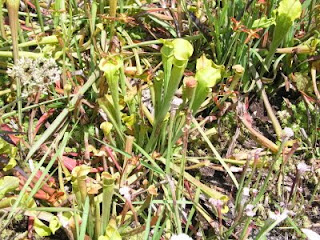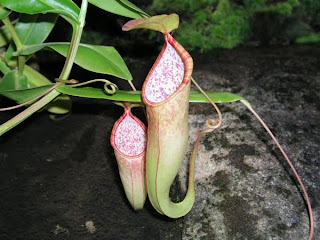More pitcher plant symbioses

First tree shrews , now bacteria. It's a symbiosis bonanza! A new paper in Applied and Environmental Microbiology details some very interesting symbioses in the pitchers of Sarracenia . Koopman et al. used environmental DNA sequencing to find bacterial sequences from pitcher fluid. They found 1000 unique bacterial types, which is comparable to the number of bacterial types in the human gut . They also did time-series samples for different plants and found that bacterial content gets progressively more similar over time. It's also significantly different from the bacterial content of the surrounding soil. Very interesting stuff. I'd love to see more sequencing to see what kind of metabolism these bacteria are capable of. Leave it to Science Daily to illustrate their news article on Sarracenia pitchers with a photo of Nepenthes . That's Sarracenia alata above. Koopman et al. 2010. The Carnivorous Pale Pitcher Plant Harbors Diverse, Distinct, and Time-Dependen


